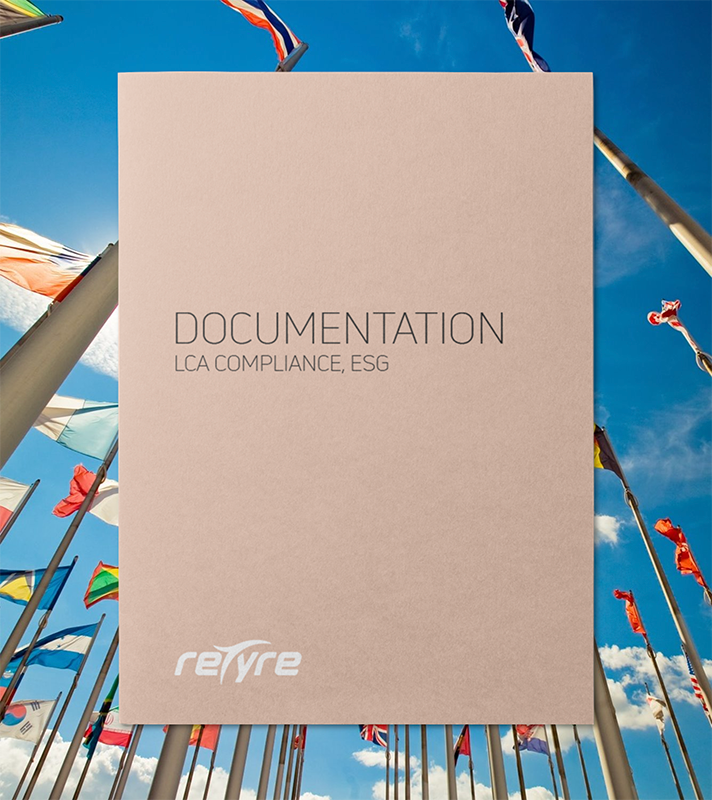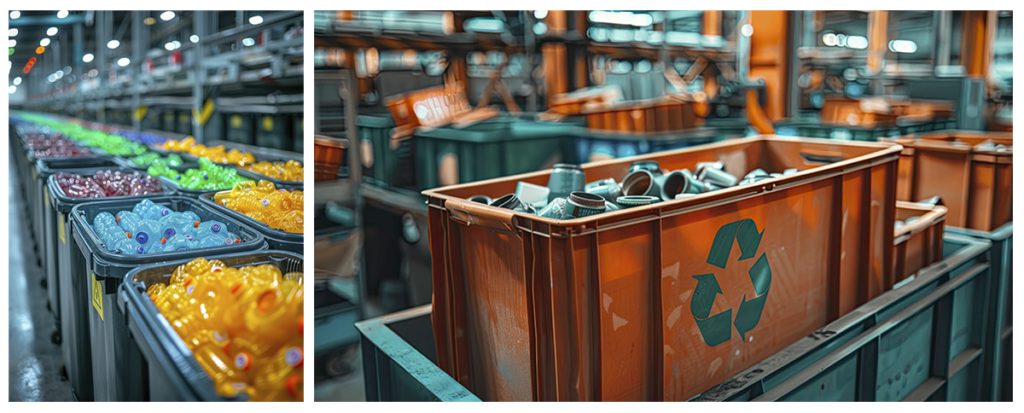reTyre, as a forward-thinking tyre manufacturer with sustainability at the heart of its operations, recognises that accurate and reliable data plays a key role in successfully reducing environmental impact.
We strive to empower our customers with precise data to enhance their Environmental, Social, and Governance (ESG) reporting. By collaborating with reputable third parties, we ensure our data’s quality, verification, and adherence to international standards.

As a global supplier, reTyre is dedicated to supporting our clients worldwide in refining their Scope 3 emissions reporting. This dedication to transparency and sustainability serves as the foundation for our exploration into the realms of Scope 1, 2, and 3 emissions. Join us as we navigate the complexities of carbon emissions, shedding light on the path towards a more sustainable and accountable industry.
What are Scope 1, 2 and 3?
In the quest for sustainability, businesses and individuals alike are becoming increasingly aware of the importance of reducing their carbon footprint. To take action to reduce emissions, we need to understand and measure where they’re sourced from in the first place.
The GHG protocol is the most widely used standard for measuring and reporting GHG emissions, adopted by 92% of Fortune 500 companies responding to the CDP (Carbon Disclosure Project) in 2016. It is an international standard and framework for measuring, managing, and reporting greenhouse gas (GHG) emissions and was created by the World Resources Institute (WRI) and the World Business Council for Sustainable Development (WBCSD).

A key part of this protocol involves understanding the categories of greenhouse gas (GHG) emissions they’re responsible for, commonly classified into Scope 1, 2, and 3. This classification helps in identifying and strategising ways to mitigate environmental impact.
Scope 1: Direct Emissions
Scope 1 emissions are direct emissions from owned or controlled sources.
For businesses, this includes emissions from manufacturing processes, company vehicles, and any on-site fossil fuel combustion. For individuals, it might mean the direct emissions from heating their homes or driving their cars.

Reducing Scope 1 emissions often involves transitioning to cleaner energy sources, improving energy efficiency, and adopting new technologies that emit less or no GHG.
Organisations have the most control over Scope 1 emissions since they originate from sources that the company owns or directly controls.
Strategies for reduction include:
- Transitioning to low or zero-emission vehicles.
- Upgrading to a more energy-efficient machinery.
- Switching to renewable energy sources for on-site power.
Scope 2: Indirect Emissions from Purchased Energy
Scope 2 emissions come from the energy that a company purchases, such as electricity, steam, heating, and cooling. These are emissions released into the atmosphere from the utilities a company or individual buys. Although these emissions occur at the facility where the energy is generated, they are attributed to the entity that purchases the energy.

Reducing Scope 2 emissions can be achieved by switching to renewable energy sources, such as solar or wind power, and by increasing energy efficiency to reduce overall consumption.
While companies don’t control the production of this energy, they can choose their suppliers and how much energy they use. Reduction strategies include:
- Purchasing green energy through renewable energy certificates (RECs) or direct renewable energy sourcing.
- Investing in energy efficiency improvements in buildings and operations.
- Implementing energy management systems to reduce consumption.

Scope 3: All Other Indirect Emissions
Scope 3 emissions are the most extensive and often the most challenging to quantify and manage. They encompass all other indirect emissions that occur in an entity’s value chain, including both upstream and downstream emissions.
For companies, this can include emissions related to the production of purchased materials, waste disposal, employee business travel, transportation and distribution of products, and the use of sold products. For individuals, it might include the emissions associated with the production and disposal of goods they use.

Addressing Scope 3 emissions requires a comprehensive understanding of one’s entire value chain and a collaborative effort with suppliers, partners, and customers to implement more sustainable practices.
Strategies for reduction include:
Reducing Scope 3 emissions presents a significant challenge for companies, primarily because it encompasses activities outside their direct control. These emissions are a result of the entire value chain, from the production of purchased goods to the end use of sold products. The complexity of accurately measuring and effectively reducing Scope 3 emissions requires a multifaceted approach:
- Strategic Planning: Developing a comprehensive sustainability strategy that includes clear goals for reducing Scope 3 emissions is crucial. This plan should identify key areas of focus, such as logistics, procurement, and product design, where emissions can be most effectively reduced.
- Designing Products with Lower Carbon Footprints: By focusing on sustainable design, companies can create products that require less energy and resources to produce, use, and dispose of. Encouraging consumers to use these products more efficiently can further reduce the environmental impact.

- Implementing Recycling Programs and Initiatives: Developing programs to reduce waste and extend the life cycles of products not only minimizes Scope 3 emissions but also supports a circular economy. This can involve everything from designing products for easier recycling to encouraging consumers to return used products.
- Engagement with Consumers: Educating and engaging consumers about the environmental impact of their purchases and usage can drive demand for more sustainable products, encouraging the entire supply chain to adopt greener practices.

- Collaboration Across the Supply Chain: Building strong relationships with suppliers and partners is essential. This involves working together to identify opportunities for emissions reduction, such as optimizing transportation routes, switching to renewable energy sources, or adopting more efficient manufacturing processes.
- Fostering Good Relations and Open Communication: Transparent communication with stakeholders, including suppliers, customers, and regulatory bodies, helps in sharing best practices, challenges, and progress towards sustainability goals. This openness can also enhance brand reputation and customer loyalty.
- Choosing Data-Driven Suppliers: Selecting suppliers that prioritize sustainability and can provide accurate, transparent data about their emissions, is vital. This data is crucial for accurate Scope 3 reporting and for identifying areas where improvements can be made.

- Beware of Greenwashing: It’s important to critically assess the sustainability claims of suppliers and partners. Companies should look for those with credible, third-party validated LCAs and a proven track record of environmental responsibility to ensure that their sustainability efforts are genuine.
By focusing on these areas, companies can align their Scope 3 emissions reduction efforts with their broader sustainability goals and values. This not only helps in reducing their overall carbon footprint but also positions them as leaders in corporate environmental responsibility.
reTyre’s Commitment to Data
At reTyre, sustainability is more than a goal; it’s a core value that influences every aspect of our operations. To this end, reTyre is proud to be a tyre manufacturer that provides detailed Life Cycle Assessments (LCAs), developed in collaboration with reputable third parties, ensuring the data quality, verification, and compliance of our data with all relevant international standards.
Our commitment to sustainability extends beyond our own operations. Providing precise data empowers our customers to make informed decisions about their Scope 3 emissions reporting. This not only aids in their sustainability efforts but also contributes to a larger movement towards environmental responsibility in the industry.
In navigating the complexities of reducing emissions, reTyre’s products offer outstanding performance while also minimising emissions, supported by conclusive data to back it up.
Sources
https://www.sustain.life/blog/scope-emissions
https://www.climatepartner.com/en/knowledge/insights/scope-1-2-3-complete-guide
https://www.epa.gov/climateleadership/scope-1-and-scope-2-inventory-guidance
https://www.epa.gov/climateleadership/scope-3-inventory-guidance
https://www.ibm.com/topics/scope-3-emissions


